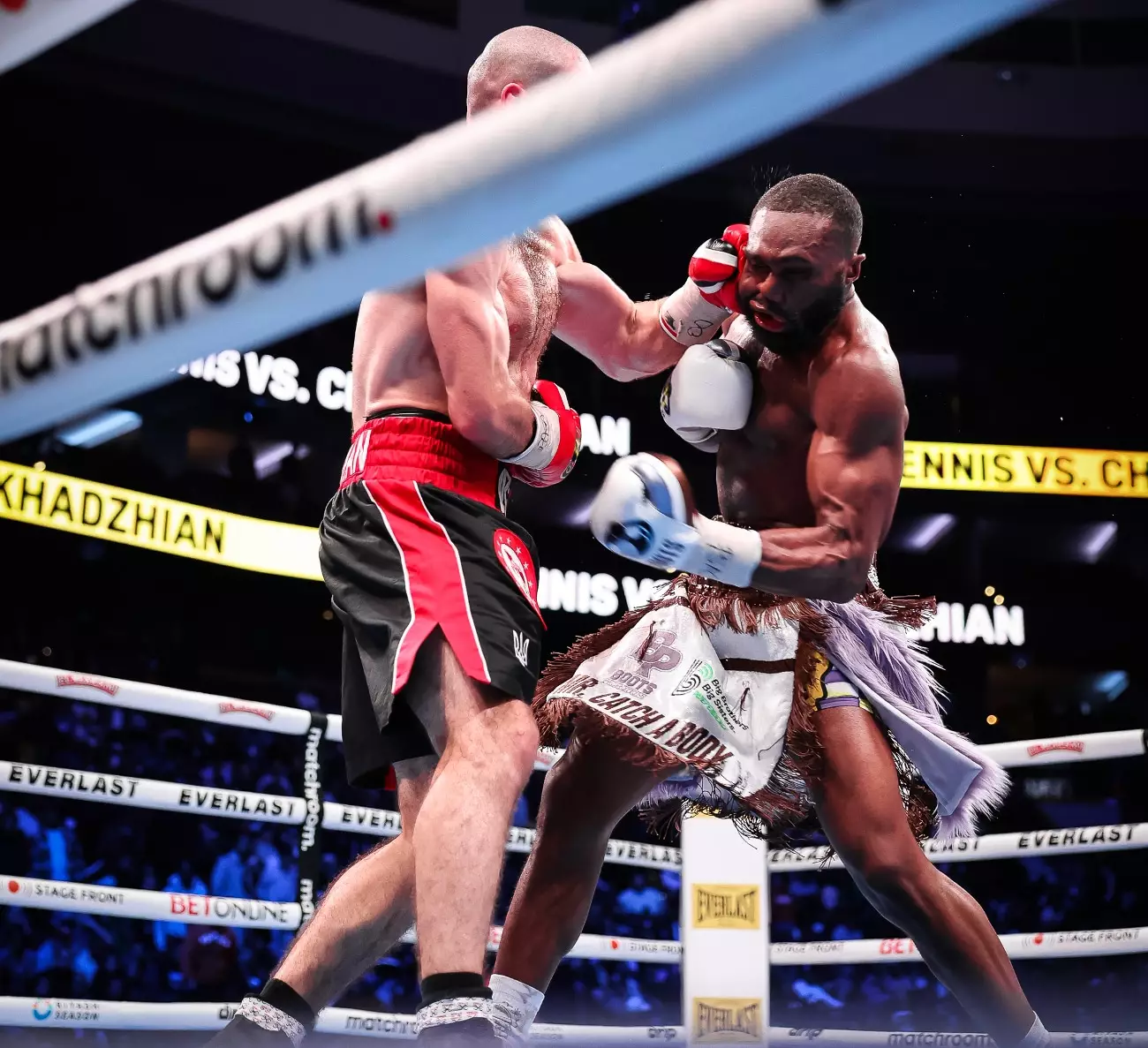In a recent clash of the titans within the welterweight division, Karen Chukhadzhian faced off against the reigning IBF champion Jaron ‘Boots’ Ennis. Though the match concluded with Ennis securing a unanimous decision victory, the bout illuminated several pivotal insights regarding both fighters’ skills and the competitive landscape of their division. While victory is celebrated, the nuances of Chukhadzhian’s performance raised eyebrows and turned heads in the boxing world, subsequently prompting a reevaluation of conventional wisdom about the champion’s dominance.
The fight, hosted at Wells Fargo Center in Philadelphia, saw Chukhadzhian (24-3, 13 KOs) showcase his resilience and adaptability against Ennis’ (33-0, 29 KOs) explosive style. Despite losing via judges’ scorecards of 119-107, 117-109, and 116-110, Chukhadzhian’s performance suggested that he might have been the more skilled and resourceful of the two fighters that night. The bout highlighted the criticism surrounding Ennis’ seemingly lackluster performance, which some observers attributed to inadequate motivation when facing an opponent perceived to be in the “bottom tier” of the competition.
Chukhadzhian himself does not harbor resentment; rather, he extols the virtues of Ennis, asserting that the champion is “too good for this” distraction of pursuing an undisputed title. It is a testament to Chukhadzhian’s sportsmanship and a marker of true competitive spirit. However, pride and humility aside, it is essential to delve into the content of how the match unfolded and what it implies for Ennis moving forward.
As the fight progressed, many fans and analysts characterized Chukhadzhian’s style as problematic for Ennis. Fans noted multiple facets where Ennis struggled—his inability to navigate Chukhadzhian’s angles and the defensive maneuvers caused him issues throughout the match. Observers on social media were quick to assert that Chukhadzhian had “exposed flaws” in Ennis’ game, asserting that those assessing the fight through a narrow lens may completely overlook the implications.
Chukhadzhian’s frequent clinches, knockdown in the fifth round, and the point deduction in the tenth may have muddied the judge’s perceptions, but they also offer insights into the adjustments Ennis must make for future bouts. This leads us to question what kind of fighter Ennis is—an adapted power-smasher or a well-rounded technical boxer? His tendency to engage in an entertaining brand of fighting could be viewed as a double-edged sword; it invites risk but also reveals vulnerabilities.
Eddie Hearn, Ennis’ promoter, echoed sentiments about the fight’s implications for other potential challengers. He noted that Chukhadzhian’s display might entice fighters to reconsider facing Ennis, especially following a performance that many deemed to be subpar. Comments from industry veterans like Oscar De La Hoya regarding potential matchups against Vergil Ortiz underline the ripple effect of this fight on the welterweight landscape.
The conversations revolving around future pairings raise critical questions about the notions of motivation and the threshold of competition at this level. Are the champions at 147 pounds truly superior to Chukhadzhian, or are they merely holding onto their belts until someone exceeds the necessary threshold of skill?
In the aftermath, all eyes are on Ennis to elevate his craft. Acknowledging that he faced a tougher opponent than expected, both he and his camp must address the underlying issues that arose during the bout. If Ennis is serious about retaining his championship, he must revisit his strategies and hone his defensive abilities against relentless pressure from other top-tier fighters.
Boxers often encounter crossroads, and this fight could signal a pivotal junction for Ennis. He must recognize that skillful opponents like Chukhadzhian exist within the welterweight division, and such encounters will become the norm rather than the exception. Proper motivation isn’t simply about the perceived stature of an opponent; it must translate to an adequate assessment of one’s abilities and limitations.
Moving forward, both Ennis and Chukhadzhian have opportunities to redefine their narratives in this highly competitive division. For Ennis, digesting the lessons from this fight should fuel a new direction in his training approach—a potential transformation into a more tactically astute fighter might not only enhance his championship reign but solidify his legacy in boxing lore.
In complimenting Chukhadzhian’s performance, we recognize the increasing depth of talent within the welterweight landscape, promising an enticing future for boxing aficionados and battle-hardened fighters alike. Only through acknowledgement and adaptation can Ennis truly separate himself as a true champion in the ranks of welterweight boxing.

